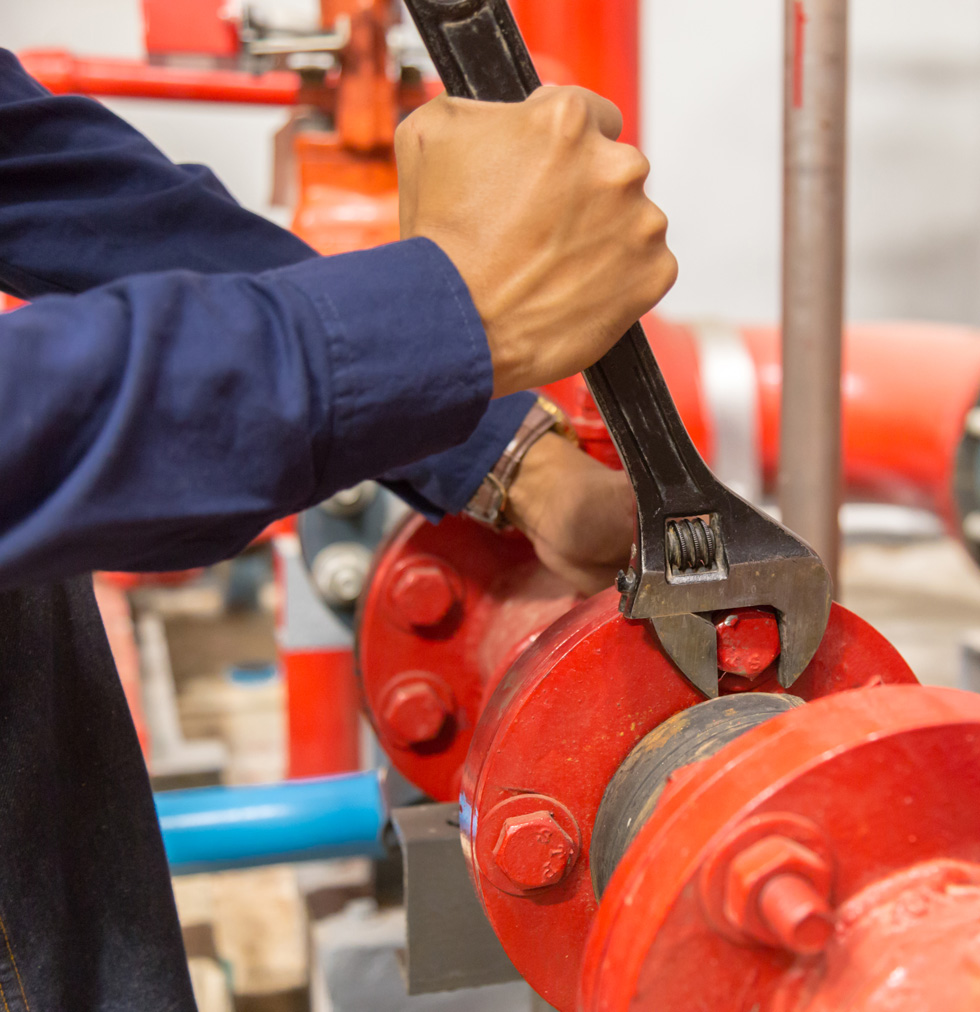Why is it necessary?
Ensuring safety in buildings is a fundamental element of responsible property management. Sprinkler system inspections play an extremely important role here, allowing them to maintain their efficiency and effectiveness in the event of a fire hazard. Let’s take a closer look at why fire protection system maintenance is so important and what benefits we can derive from it.
Sprinkler system inspection schedule – how to set it up?
The PN-EN 12845 standard clearly defines what needs to be done for the system to operate properly. A properly designed sprinkler maintenance schedule should include weekly, monthly, quarterly and annual inspections.
Weekly inspections include checking pressure gauges, water levels in tanks, and pump operation. Monthly inspections include more in-depth checks, such as checking the condition of batteries and alarm devices. Quarterly inspections are more detailed and include checking the technical condition of pipes and sprinklers. In turn, annual inspections, performed by specialist companies, are the most comprehensive and include, among other things, pump performance tests and checking the installation for potential corrosion hazards.
The establishment of a schedule should be preceded by a detailed audit of the installation. It is important to take into account the specifics of the facility and its intended use. For example, in warehouses where pipes for sprinkler systems are used, it is necessary to regularly check their tightness and corrosion resistance. All maintenance activities should be documented. This facilitates monitoring the condition of the system and making decisions about possible repairs.

Most Common Sprinkler System Failures and How to Prevent Them
One of the most common problems is sprinkler system failures resulting from pipe corrosion, clogged valves or mechanical damage to sprinklers. Pipe corrosion is particularly problematic in wet systems, where the constant presence of water promotes the formation of rust. To prevent it, regular inspections should be carried out and appropriate protective coatings should be applied. In dry systems, where the pipelines are filled with compressed air, problems with seals and valves often occur. The solution is to periodically replace them and check the tightness of the system.
Another problem is sprinkler failures, which may result from mechanical damage or deposits blocking the water flow. In such cases, it is necessary to clean or replace the faulty elements. It is also important that the design of the installation is adapted to the specifics of the facility. Therefore, at the construction stage, it is worth using the services of professional companies dealing with sprinkler system design.
Regular maintenance of sprinkler systems is a simple recipe for effective fire protection. A properly planned sprinkler maintenance schedule, performing regular sprinkler system inspections and cooperation with a professional service allow you to minimize the risk of failures and ensure the safety of your facilities.
